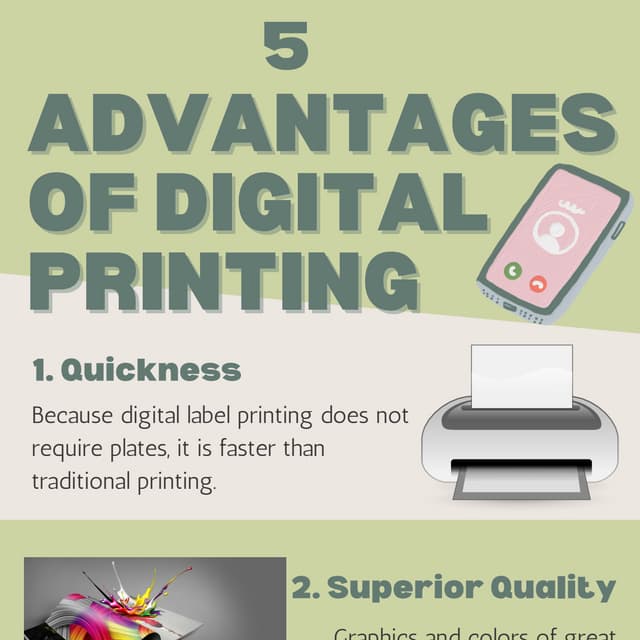The Single Strategy To Use For Digital Printing
The Single Strategy To Use For Digital Printing
Blog Article
Rumored Buzz on Digital Printing
Table of Contents3 Easy Facts About Digital Printing DescribedSome Ideas on Digital Printing You Should KnowThe 10-Minute Rule for Digital Printing7 Easy Facts About Digital Printing DescribedA Biased View of Digital PrintingSome Ideas on Digital Printing You Need To Know
Variable data printing, such as straight mail with customized codes and addresses, is preferably matched for digital printing. Digital quick printing only requires 4 actions of design, testimonial, printing and binding to get whatever done. Digital fast printing has an unmatched benefit: print on demand.According to PMMI, electronic printing permits brands and makers to respond swiftly to consumer needs while improving the supply chain, reducing warehousing cost and waste, and enjoying faster time to market. That all sounds great, yet how does this technology do all that? The significant differentiator of these modern technologies is that there are no set up charges and no plates with digital printing.
The 2-Minute Rule for Digital Printing
According to Wikipedia, the best difference in between digital printing and typical methods such as lithography, flexography, gravure, or letterpress - Digital Printing is that there is no demand to replace printing plates in digital printing, whereas in these analog printing methods the plates are continuously replaced. This causes quicker turn-around time and reduces price when using digital printing.
Digital printing is very adaptable, so it's easy to make changes to the package style swiftly. It all goes back to the plates.
With conventional printing methods, short-run printing is simply not feasible. Since a great design can make or damage your item, digital printing consistently creates high-quality, clear and vivid graphics each time.
Digital printing is the process of printing digital-based images directly onto a selection of media substratums. There is no requirement for a printing plate, unlike with balanced out printing. Digital data such as PDFs or desktop computer posting data can be sent directly to the electronic printing machine to publish on paper, picture paper, canvas, textile, synthetics, cardstock and other substratums.
Some Known Incorrect Statements About Digital Printing
According to PMMI, electronic printing allows brand names and makers to respond promptly to client needs while enhancing the supply chain, reducing warehousing price and waste, and delighting in faster time to market. That all sounds great, but how does this innovation official statement do all that? The major differentiator of these technologies is that there are no set-up fees and no plates with digital printing.
This results in quicker turnaround time and lowers price when making use of electronic printing.

The 6-Second Trick For Digital Printing
With standard printing techniques, short-run printing is simply not possible. Due to the fact that an excellent style can make or damage your item, electronic printing regularly produces top quality, clear and vivid graphics each time.

According to PMMI, digital printing permits brands and producers discover here to react rapidly to client needs while boosting the supply chain, lowering warehousing expense and waste, and appreciating faster time to market. That all noises terrific, but just how does this technology do all that? The significant differentiator of these innovations is that there are no set-up costs and no plates with digital printing.
Unknown Facts About Digital Printing
This results in quicker turn-around time and reduces cost when making use of digital printing.
Digital printing is highly flexible, so it's easy to make adjustments to the plan layout promptly. It all goes back to the plates.

Fascination About Digital Printing
Digital printing is the process of printing digital-based images directly onto a selection of media substrates. There is no requirement for a printing plate, unlike with balanced out printing. Digital documents such as PDFs or desktop publishing documents can be sent directly to the digital printing press to publish on paper, image paper, canvas, material, synthetics, cardstock and other substratums.
Report this page